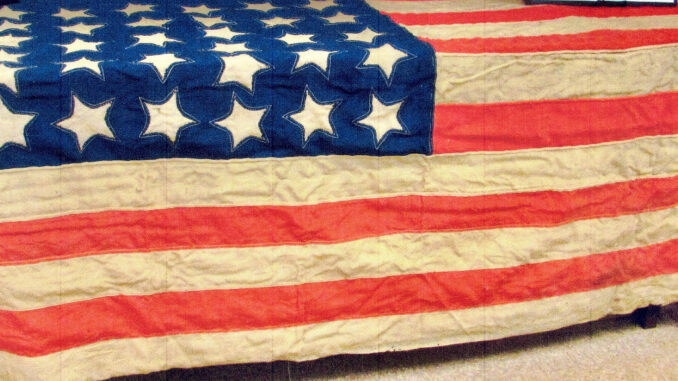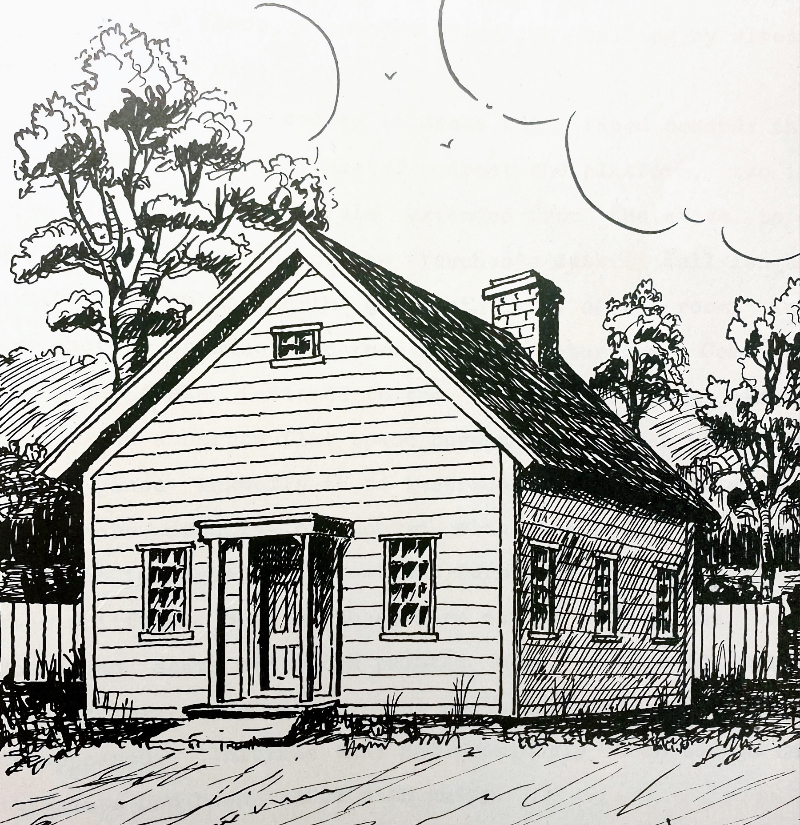
PARK RIDGE—It was in the decade after the U.S. Civil War that the ladies of Park Ridge came together and held something like an old-fashioned sewing bee, except this was no ordinary day of stitching. The result of their production was a large American flag, 5 feet by 8 feet.
What prompted them to make the flag? We’ll never know for sure. Perhaps it was pure patriotism. It could be that they had need of a flag for a ceremonial occasion, and it was more economical, or enjoyable, for the woman to sew one instead of buying one. Eventually the flag was given to the Park Ridge School, but whether it was created specifically for that purpose is a story lost to history.

Whatever the reason, the women of Park Ridge gathered at every available moment and industriously cut and stitched their flag. The five-pointed stars, all cut out by hand, were only 37 in number; the flag was made between the admission into the union of Nebraska (1867) and Colorado (1876).
Many parts of the flag were also sewn by hand, while others show the uniform stitches of a treadle machine. Sewing machines had recently started making their way into American homes, a revolutionary replacement for hand-sewing.
The women’s flag flew proudly from a pole in front of Park Ridge’s one-room wooden schoolhouse. The school in those days was set back from Pascack Road and Park Avenue, standing about where the Park Ridge High School’s baseball diamond is today. That building, the only school in town, extended through eighth grade, but many did not make it that far. In that era, a basic grammar school education was considered sufficient for most Pascack Valley children, who would grow up to be farmers or homemakers.
When the school was renovated in 1876, school clerk William Park purchased a fresh flag to go with it. Park kept the old flag for decades. His daughter, Miss Augusta Park, donated it to the Pascack Historical Society in the 1940s. The flag is still preserved in the museum’s textiles department. We hope the women who created it would be happy to know their handiwork exists a century-and-a-half later and is in safe hands.
Flag Day is Friday, June 14. Fly your stars and stripes proudly.
